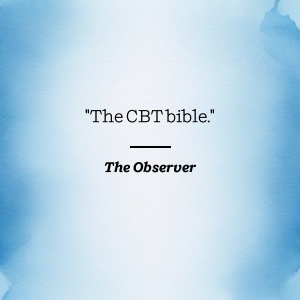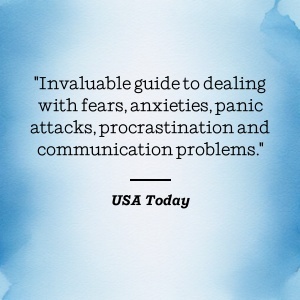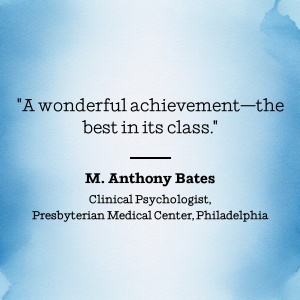Customer Services
Copyright © 2025 Desertcart Holdings Limited
Desert Online General Trading LLC
Dubai, United Arab Emirates


Full description not available



A**N
No Miracles Promised... Which is Why it Works
In my early 20's, I had some serious issues with depression and anxiety. I was coerced into reading this in a program I was in as "punishment." Ironically, it was the most effective thing I had ever found. Be leery of anyone that promises you a quick or simple fix to anxiety/depression. These things develop very slowly and, likewise, it takes a long time to get better.What I can say is this: do this book... ALL OF IT! It is very easy to say to hell with it and skim through some chapters or look for the magic solutions. You just need to work your way through it though, every exercise. It was a remarkable experience for me. Each week I didn't feel any difference really, maybe a marginal improvement. However, taking the depression/anxiety inventories week-by-week, over the course of several months, I saw things getting better and better (obviously, with the exception of some rough weeks, since life still happens). However, as someone who struggled with mood disorders (I will not get into specifics, but there have been some very dark and scary times) since my teenage years, off and on, this was the first time things honestly changed, semi-permanently.It has now been about 5 years since I first worked through the book and I have bought it myself, now, as I have just moved across the country to earn my doctorate. Obviously, this brings about a lot of stress and feelings of insecurity. The move alone is intense. However, this book will help you control your irrational thoughts and keep yourself in check.There are no miracles in mental health. There is no quick and easy way to cure depression: no supplements, no pills, no dietary changes. Sure, every one of those things can marginally help, but without addressing the cognitive bases of these problems, things will inevitably return after an initial period of placebo-esque hope. This book promises slow, continual progress and it delivers. If you are truly struggling, I cannot recommend this enough.
P**L
Effective and user-friendly tools
In both this book and its predecessor ("Feeling Good"), David Burns has done an excellent job of putting tools into our hands so we can change the feelings and behaviors that we want to change. The tools in this book that I've found most helpful include (i) instruments to measure both anxiety and depression, (ii) a "pleasure-predicting sheet," (iii) a daily mood log to help identify and change unwanted feelings, and (iv) tools to help you overcome procrastination.I agree with another reviewer who said that this book and "Feeling Good" overlap to a great extent, and I recommend this one. You don't need to read "Feeling Good" first, and the worksheets in this "Handbook" are larger and easier to copy and work with.While Dr. Burns uses tools from cognitive behavioral therapy, I strongly recommend that you also obtain "A Guide to Rational Living," by Albert Ellis. Dr. Ellis invented rational (cognitive) behavioral therapy in the mid-1950s and still writes, lectures, and works with clients. While Burns' books are generally better written than Ellis', Dr. Ellis teaches you how to use cognitive techniques more effectively than Dr. Burns does. Instead of just showing you how to recognize faulty thinking that produces unwanted feelings and behaviors and think of alternative thoughts, Dr. Ellis teaches you how to PERSUADE YOURSELF that this faulty thinking is both irrational and counter-productive. In my view, the difference in their approaches is similar to that between an intellectual discussion and a thoroughly persuasive speech. In order to make the desired changes, you need to convincingly and powerfully persuade yourself to change your thinking.Together, this book and "A Guide to Rational Living" give you most all of the tools you need to experience the changes that you want in your feelings and behaviors. The approaches in both books require work. Passively reading them (or anything) will not lead to significant changes. The best news of all is this: There is hope! And you can have the tools at your fingertips.
J**.
This is a great book. I don't think there has been any ...
This is a great book. I don't think there has been any self-help book that has helped me as much as this one. The explanations are very clear and the sequence of self-help activities (cognitive behavior therapy) is very easy to understand. The program begins by explaining the different ways we distort our thinking. For example, "mind-reading" is one of our distorted thinking patterns which is when we presume to know what others think of us, our clothes, our actions, etc. aThe book describes 10 cognitive distortions that make us unhappy. Then, there are exercises to identify negative thoughts, understand the distortion at play, and reframing the thought in a positive way. This is a very "in-a-nutshell" sort of explanation. I have been working in the book for three weeks. Already I feel a tremendous change in my outlook. There are exercises to do. If you do them, you will get better. If you just read the material, probably not. Think about this: you can read a stack of books about tennis but until you get on the court you'll never be able to play. Get this book and do the exercises. You'll be pleased.
Trustpilot
1 week ago
2 weeks ago